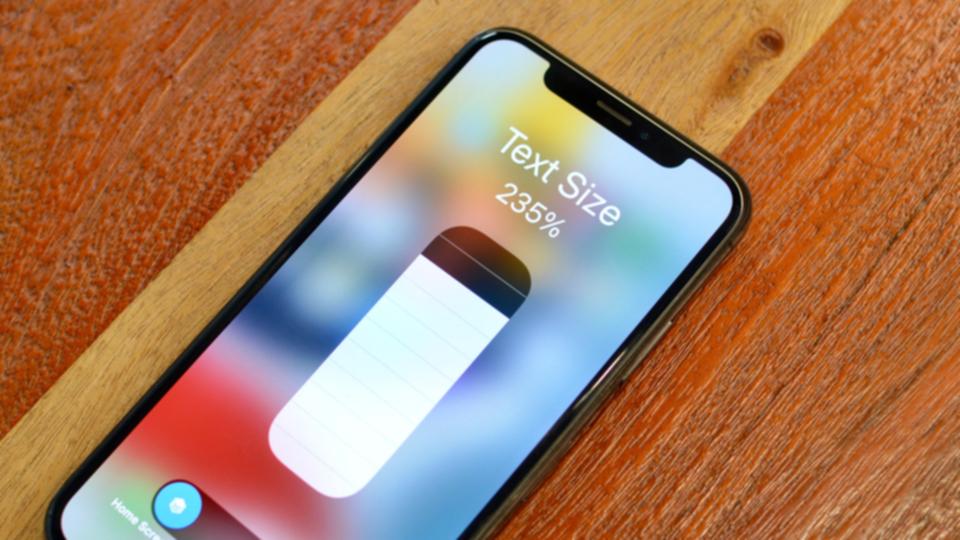"Portable Wi-Fi" Review
25/03/2022

Even if you often wish that your smartphone's letters and icons were bigger, you're not the only one.
Some people like tiny fonts, others like big bold everywhere.
Thankfully, there are things you can do to make your text more readable and others easier to read while using your iPhone.
The first way to make the characters easier to read on the iPhone is to increase the font size.
You can quickly increase it by going to "Settings> Screen Display and Brightness> Change Text Size".
You can increase the font size across iOS by moving the slider to the right. Many iPhone apps use the system's default font size, so changing this setting will make characters in multiple locations easier to read.
If you think the maximum font size isn't enough, you can make it even bigger by turning on Settings> Accessibility> Screen Display and Text Size> Larger Text.
When this setting is enabled, a larger font size will be added to the font size slider at the bottom of the page.
In iOS 15, you can also set the font size for each app.
Some people find it easier to read in bold than in increasing the font size across iOS. In that case, enable "Settings> Screen display and brightness> Thicken text".
Increasing the font size does not increase the size of iPhone notification banners and icons.

To make it larger, go to "Settings> Screen Display and Brightness> Display", select "Enlarge", and tap "Settings" in the upper right to enable it. You will need to restart your iPhone to change this setting.
The iPhone comes with a magnifying glass from the beginning. It's meant to be used as an accessibility feature, but it's useful when you want to zoom in on something.
For example, if the text in a book is too small to read, start the magnifying glass and zoom in with your iPhone's camera. Go to "Settings> Accessibility> Magnifier" and enable the magnifying glass.
After enabling this setting, the magnifying glass will appear as an iPhone app. Find it in Spotlight or the App Library and start it.
After opening the magnifying glass, you can zoom in on the real thing with the slider next to the magnifying glass icon.
The iPhone can also be expanded further. People suffering from low vision can take full advantage of this feature of being able to zoom in on anything on the screen.
Go to "Settings> Accessibility> Zoom Function" and enable the zoom function.
Now, if you double-tap the screen with three fingers, you can zoom in much more than when the zoom function is disabled.
You can also move around the screen by dragging with three fingers. Once you have zoomed in enough, you can double-tap with three fingers to change the magnification, such as zooming out.
In some menus, the foreground color has become familiar with the background color.
This can be problematic, such as inadvertently tapping the wrong place on the screen. To solve this problem, increase the contrast between the foreground color and background color of iOS.
In Settings> Accessibility> Screen Display and Text Size, enable "Increase Contrast".
If you can't distinguish a particular color, you can enable "Non-color distinction" on that page. Then, the color-dependent interface items will be informed in other ways.
Some people may find it difficult to see the position of the button on the screen.
In such a case, the accessibility function of the iPhone will make the button stand out by underlining it, just like displaying the hyperlink text on a web page (as the "Back" button in the image above is underlined in blue). Can be.
To use this feature, enable "Button Shape" in "Settings> Accessibility> Screen Display and Text Size".
If you're not sure if an option is enabled or disabled on your iPhone, you can easily distinguish it with "on / off label". Go to "Settings> Accessibility> Screen Display and Text Size" and enable "On / Off Label".
In each toggle part, "○" is displayed when it is invalid, and "|" is displayed when it is valid.